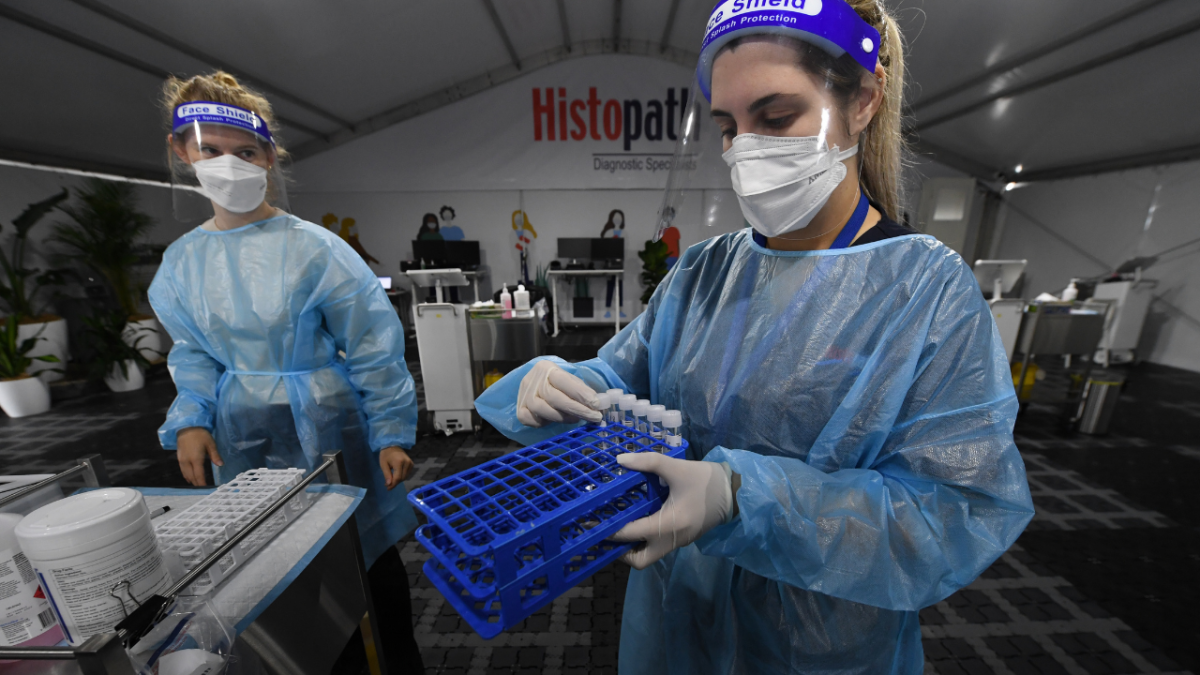
A COVID-19 subvariant — dubbed BA.2 or “the son of Omicron” — has concerned NSW health authorities this week who believe it has contributed to rising cases in NSW.
Since the first cases of the subvariant were confirmed in the state at the end of January, numbers steadily rose and peaked at 16,288 new daily cases of COVID-19 on March 11.
Health Minister Brad Hazzard said BA.2 was more infectious than the BA.1 strain that infected thousands in December and January. He said this indicated cases could “more than double” within six weeks.
“It’s very preliminary and we need to do a lot more digging … but we are concerned at this point that BA.2 is amongst us and overtaking BA.1,” he said.
Hazzard said he was concerned people had “switched off” and stopped worrying about the virus which posed its own threat because booster uptake was still low at only 56 per cent.
Honestly we out here trying to catch a break like it’s the rarest Pokémon.
So what is this subvariant and why is it called that?
While some have called it the son of Omicron like someone out of Lord of the Rings, it’s also been called a sister variant, cousin variant or, in science speak, a sublineage. This is because it’s part of the Omicron family and not a whole new variant.
Let us explain.
What is BA.2 and where did it come from?
The nickname Omicron refers to the family of subvariants — the main ones are BA.1, BA.2 and BA.3.
The first BA.2 sample was collected in South Africa on 17 November 2021 as all arose at the same time from the same ancestor strain.
But due to the prevalence of BA.1 — the one that has spread around the world — the shorthand Omicron quickly came the common name for it, which scientists have said is now causing some confusion.
Delta, for example, had more than 200 sublineages, and experts say no doubt more Omicron sublineages will be described in future.
Just to clarify some confusion about what ‘Omicron’ is.
‘Omicron’ has always applied to the whole family (BA.1-3 – we’ve known about them all since late-Nov/early-Dec).
But the prevalence of BA.1 meant that it got shorthanded as ‘Omicron’ – that’s causing some confusion now!???? pic.twitter.com/M4FwzGbluo
— Dr Emma Hodcroft (@firefoxx66) January 28, 2022
It has been recorded in countries all over the world including the UK, Germany, India and Denmark where BA.2 quickly replaced BA.1 in case numbers. This backs up hypotheses that it’s more transmissible than BA.1.
How is BA.2 different to BA.1?
BA.2 has 32 of the same mutations as BA.1, but it also has 28 that are different.
Mutations like this are normal in a virus that has so many hosts and therefore more opportunities to evolve. At the moment each lineage is acquiring new mutations at a rate of two per month around the world.
So far experts have said there’s no evidence to suggest its symptoms are more severe, but it may be more transmissible.
In Denmark the government’s Serum Institute showed no differences in hospitalisations for BA.2 compared with BA.1, but on Jan 27 reported “preliminary calculations indicate that BA.2 is effectively well over one and a half times more contagious than BA.1.”
How effective are vaccines against BA.2?
Researchers predicted there wouldn’t be a significant different in vaccine effectiveness between BA.1 and BA.2.
One UK Health Security Agency report published on Jan 27 found vaccines were more effective against BA.2 in people who had received a booster shot.
“Vaccine effectiveness against symptomatic disease was similar for BA.1 and BA.2 sublineages of Omicron,” the report read.
It found that two weeks following a booster, protection against symptomatic disease was 63 per cent for old mate BA.1 and 70 per cent for BA.2.
Unfortunately scientists don’t know yet whether prior infection with BA.1 will protect you against BA2.
Vaccines are still incredibly effective at preventing serious illness, hospitalisation or death from COVID-19, regardless of variant.
How many cases are there in Australia?
UNSW School of Population Associate Professor James Wood said BA.2 has been dominant in NSW “for about a month”. This means at least half of the thousands of cases recorded in the daily updates are BA.2.
“We’ve started to see that pattern in a number of other countries like the UK and now we’re getting data that’s confirming that’s the case in Australia, in particular NSW,” he told the ABC.
“We think by the end of the month it will be 90 per cent of the cases [in NSW].”
He said cases would reach “the 20,000 to 30,000 range in early April” before declining in May.
In Victoria, cases have also been climbing since February which Melbourne University epidemiologist Professor James McCaw attributed to the lifting of restrictions including density limits in mid-February and the spread of BA.2.
McCaw told the Age Delta infections had “basically disappeared” and all cases were one of the two Omicron sublineages.
“I expect there to be a steady rise of infections over the coming months,” he said.
Vic reported 7779 new infections on Thursday; an increase of 700 cases from a week earlier.
Should I be worried?
At this stage if you’ve been triple-vaxxed you’re probably not at risk of a serious infection. But immunocompromised people still are so please continue to wear your mask.
The World Health Organisation has not listed BA.2 a “variant of concern” basically because it is not technically a variant, but it has said more research is urgently needed.
“As of 24.01.2022, the BA.2 descendent lineage, which differs from BA.1 in some of the mutations, including in the spike protein, is increasing in many countries,” it said in a statement.
“Investigations into the characteristics of BA.2, including immune escape properties and virulence, should be prioritised independently.”
In Victoria 61 per cent of the eligible population has received three doses of vaccine. In NSW, that figure is 56 per cent.
Please, for the love of Viggo Mortensen, get your booster ASAP.



